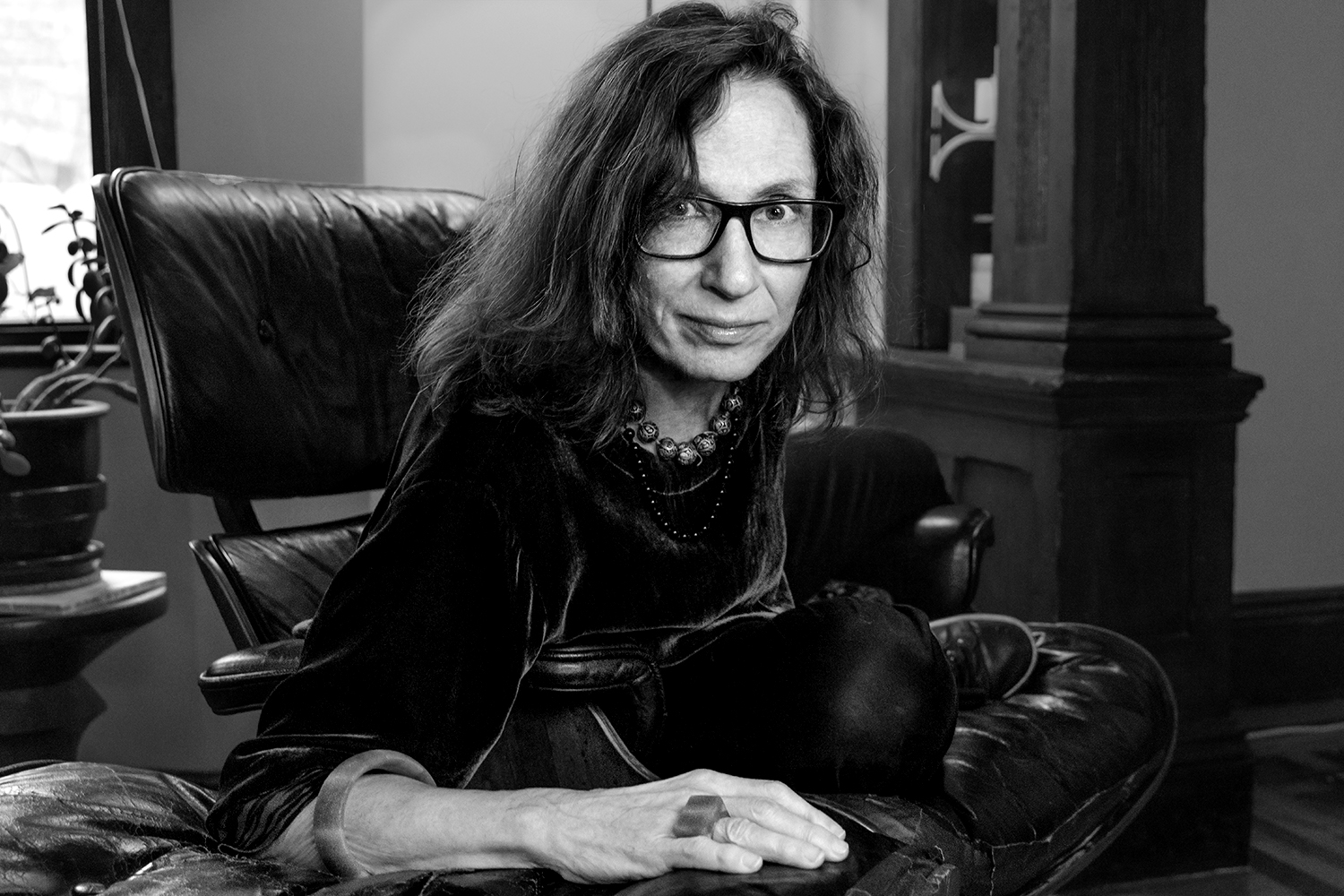
Claudia Hart is a trans-media artist. She was educated in art and architectural history in the late 1970s and early 1980s at NYU and Columbia University. This training remains formative to her digital art practice, one that emerged in the early 1990s after she had already exhibited intermedia work for a dozen years in the NY downtown art scene. Hart then transferred her analog practice into the digital space, and has bridged these two worlds ever since. Hart’s strategy is conceptual. She tends to make distinct bodies of work that track an art-historical research, setting herself up as both its subject and its object. Her work is profoundly reflexive and consistently so.
Hart is considered a pioneering artist in virtual imaging. Her first retrospective, charting this history took place at the Francisco Carolinum media-art museum, in Linz Austria (Aug 27, 2025 - Feb 6, 2026). Initially Hart produced experimental 3D animation to make media installations and projections. Later, she investigated other forms of VR, AR, and objects using computer-driven production machines, all adapted from the same computer models.
Starting in 1990, Hart took a feminist position in the world of simulation technologies, a world devoid of women when she entered the space 30 years ago. As a feminist artist, her tactic is to speak in the voices of the patriarchs. She expands on tropes borrowed from canonical philosophers, poets, architects and painters. In addition, Hart inverts the rationalist voice and esthetic language of the Western canons, transforming them into something absurd, fantastical, haunting and often dark. She appropriates sober art-historical aesthetics, reinventing them as fantasy worlds, theatrical decor and liminal environments.
Claudia creates settings functioning like musicological room installations. Although the objects in her rooms are complex and multivalent art works, her strategy is not object oriented. In these settings, Hart proposes situations with stories behind them that are metaphysical, symbolic and allegorical, culled from history but always about the present. Her rooms echo with the voices of women that she performs and also scripts.
Writing and philosophizing is an essential part of Hart’s art practice. Starting with her first exhibitions in the 1990s, she works in a hybrid form, merging stories and pictures, that include illustrated books resembling children's fairy tales that initially took the form of paintings, drawings and prints, but for the past fifteen years, animations and audio performances featuring her own digitally manipulated voice. Claudia self-produces theatrical, mediated performances, augmented-reality applications and animations, in which she speaks in the voices of characters that are strange and artificial, although her topics are serious: techno ethics and sociology.
Most recently, in 2025, Hart collaborated with the media theorist and historian Natasha Chuk, to publish The First Circle (Radical Humanism) a revision of American post-war media art history that takes the form of the “computer original stories” of 40 digital-art pioneers born between 1945 and 1960.
Hart’s works have been collected by the Whitney Museum of American Art; the Museum of Modern Art; the National Gallery, Hamburger Bahnhof, Berlin; the Albertina Museum, Vienna; the Museum of Contemporary Art San Diego; the Vera List Center Collection; the Goetz Collection; the Borusan Contemporary Collection; the Carl & Marilynn Thoma Foundation Collection; the Lutz Teutloff Photo and Video Collection, the Anne and Michael Spalter Digital Art Collection; the Richard and Ellen Sandor Family Collection; the New York Public Library, the Addison Gallery of American Arts, Andover, MA; and the Francisco Carolinum Linz. Her work has appeared in numerous international presentations that include The New Museum NYC, and the Eyebeam Center for Art + Technology. She earned a B.A. in Art History, Summa Cum Laude, from New York University, where she was awarded the Founder’s Award, and an M.S. from Columbia University Graduate School of Architecture in architectural history and conservation.